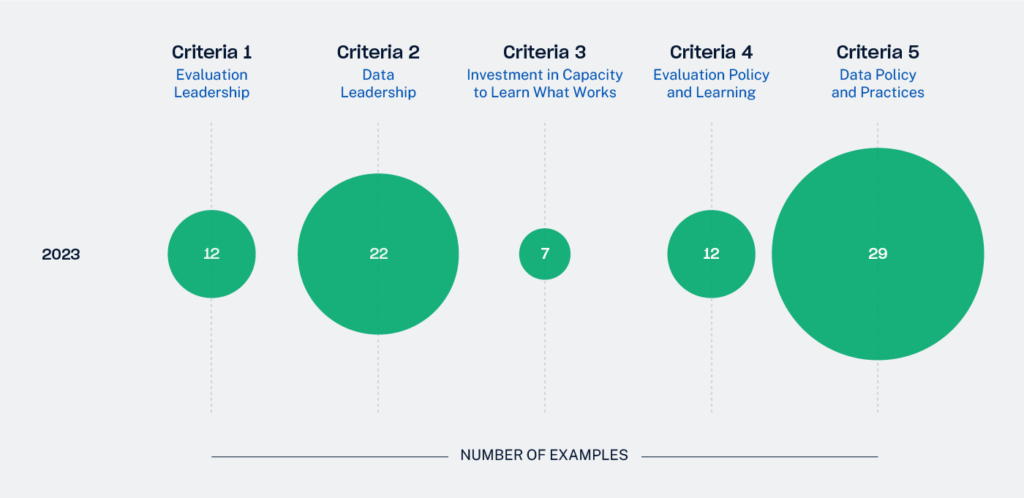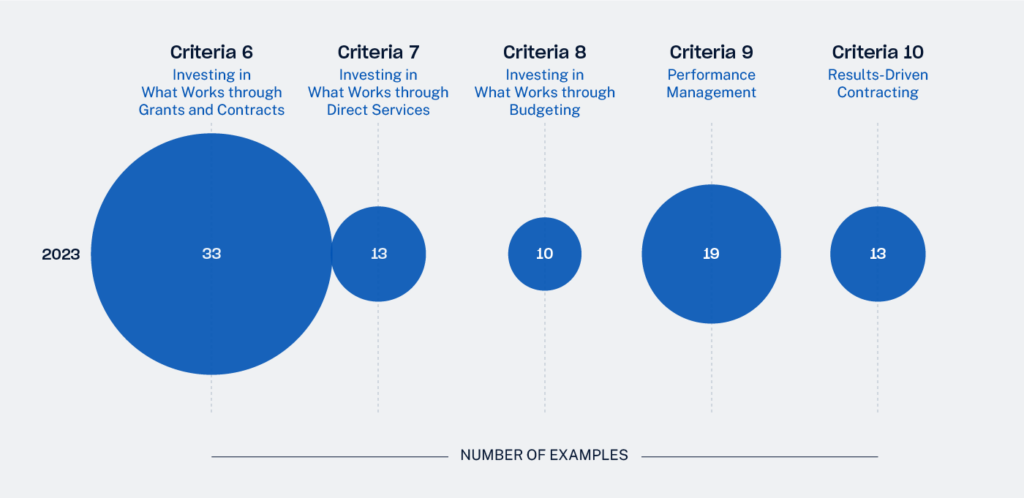2023 State Standard of Excellence Key Findings
The 2023 State Standard of Excellence recognizes five Leading States — Colorado, Minnesota, North Carolina, Oregon and Tennessee — and five Honorable Mention States — California, Connecticut, New Mexico, Pennsylvania and Utah — for their exemplary use of evidence and data to guide decision making and invest taxpayer dollars in “what works”.
This year’s State Standard of Excellence showcases 46 states’ 194 efforts to improve residents’ lives and accelerate economic mobility by using data and evidence in grantmaking, budgeting, and direct services. Newly featured states in 2023 include Hawaii, Maine, North Dakota, Oklahoma, and Wyoming.
What is new in 2023?
In order to simplify the State Standard of Excellence and incorporate feedback from Results for America’s State Advisory Committee and state policymakers, RFA made the following changes for 2023 criteria from previous years:
- Integration of criteria on performance management and data use
- Integration of criteria on evaluation use into other evaluation-related criteria
- Integration of criteria on data policies and data infrastructure
- Removal of criteria on culture, innovation, and repurposing for results
- Addition of criteria on community participation and direct administration of evidence-based interventions by government employees
Building Evidence and Learning to Get Results
These states are leading the way:
1. Evaluation Leadership – Tennessee
2. Data Leadership – Connecticut
3. Investment in Capacity to Learn What Works – Tennessee
4. Evaluation Policy and Learning – North Carolina
5. Data Policy and Practices – Connecticut


Using Learning to Change Practice, Policy, and Funding
These states are leading the way:
6. Investing in What Works through Grants and Contracts – Michigan
7. Investing in What Works through Direct Services – Minnesota
8. Investing in What Works through Budgeting – Colorado
9. Performance Management – New Mexico
10. Results-Driven Contracting – Washington
Delivering Results for All
These states are leading the way:
11. Community Participation – Pennsylvania
12. Identifying Key Outcomes and Tracking Progress – Utah

Sector Examples
Within these criteria, states undertook efforts across numerous sectors, as reflected in the following chart.

Key Takeaways
States are increasingly investing in what works through grantmaking, budgeting, and direct service provision
Evidence-Based Grantmaking
The 2023 Invest in What Works State Standard of Excellence features 52 agencies in 33 states that have put outcomes for the people they serve front and center by defining and prioritizing evidence of effectiveness in at least one state grant program since 2020. This represents over $1 billion of investment in 2022, and a $690 million increase from 2021.
State agencies use grants and contracts to provide resources to local partners who deliver services. They can produce better and more equitable results for residents by increasing the proportion of public resources directed to interventions with evidence of effectiveness. Criteria 6 of this State Standard and an accompanying honor roll recognize state grant programs that clearly define evidence of effectiveness when they invite applications from potential grantees and prioritize such evidence when selecting the organizations that will deliver services on their behalf.
California, Michigan, and Tennessee are leading evidence-based grantmaking efforts in the states. California has invested $246.7 million in six grant programs that define and prioritize evidence, including the Adult Reentry Grant Program which delivers Housing First services for people formerly incarcerated in state prison. Michigan has invested $344.5 million in what works by defining and prioritizing evidence in three grant programs since 2020, including the Great Start Readiness Program in 2022 which funds evidence-based, high-quality preschool programs that have been shown to have a significant positive developmental impact on children. Tennessee has invested $269.8 million in five evidence-based grant programs since 2020, including programs that effectively reduce recidivism rates and increase an offender’s likelihood of success following release from incarceration.
Other notable findings include:
- The New York Office of Children and Family Services (with an annual budget of over $3.5 billion) and the Texas Workforce Commission (with an annual budget of over $1.9 billion) have agency-wide definitions of evidence that they use for prioritizing the use of evidence in grantmaking
- At least 30 states use the Americorps Evidence Exchange tiered evidence framework as a requirement for their state service program RFPs
States that define and prioritize evidence of effectiveness in grant programs can continue to nominate their programs here. Approved nominations will be included in future State Standards of Excellence and the annual honor roll list for their commitment to making evidence-based investments, a critical leverage point in delivering results to residents and communities, especially as states allocate federal recovery investments. To learn more or to receive advice on evidence-based grantmaking, please email states@results4america.org.
Evidence-Based Budgeting
The 2023 Invest in What Works State Standard of Excellence features 10 states that have put outcomes for the people they serve front and center by defining and prioritizing evidence of effectiveness in the state budget process by:
- Defining evidence of effectiveness for purposes of budget development (CO, IL, MN, NC, NM, OR, RI, and TN)
- Including a default field for evidence collection on internal budget documents (CO, MN, NC, NM, OH, RI, TN, and UT)
- Setting evidence-based targets (OR)
- Including evidence indicators in public budget documents (CO and MN)
Five of these states are also using language within their budget that promotes budgeting towards creating equitable outcomes (CO, IL, MN, NM, and OR).
Ohio is the state that most recently made changes to their budget process to incorporate evidence. Ohio’s Fiscal Year 2024-2025 Operating Budget Guidance initiated Results-Focused Budgeting which requires agencies requesting funds for new or expanding programs to provide additional information in their budget request to the Office of Budget and Management (OBM). To demonstrate a program’s effectiveness, each program provided a simple logic model, proposed output and outcome measures, and data for those measures for fiscal years (FYs) 2019-2025. If funds were requested for an evidence-based program, agencies were asked to provide a summary of the findings of the evidence, along with the study citation and, if applicable, the rating given by an evidence clearinghouse. In FY 2024, the state general fund is investing in evidence-based programs aimed at improving early childhood outcomes.
Evidence-Based Direct Services
The 2023 Invest in What Works State Standard of Excellence features 13 states that have put outcomes for the people they serve front and center by directly administering evidence-based interventions. Minnesota, Oregon, and Tennessee are leading the way in implementing evidence-based direct services.
States reported investing over $3 billion towards evidence-based direct services. Minnesota invested over $1 billion dollars on evidence-based practices for children and families direct services in FY24-25. Oregon invested over $90 million of 2021-23 total funds in direct services delivered by the Oregon Youth Authority and Oregon Department of Education Youth Development Division. Tennessee invests over $1 billion dollars annually in evidence-based practices when providing direct services such as Mental Health, Education, and Corrections services.
States are proactively engaging and empowering residents and community partners to inform policy development, program design, and delivery processes with an emphasis on historically underserved communities
The 2023 Invest in What Works State Standard of Excellence includes a new criteria on community participation which highlights state examples of public engagement strategies and proactive engagement of historically underserved communities. Thirteen states are featured in the State Standard of Excellence for actively engaging their diverse communities in building and implementing policies and programs, from education to environmental protection to broadband expansion. Pennsylvania is leading the way with Governor’s Commissions on African American Affairs, Asian American and Pacific Islander Affairs, Latino Affairs, LGBTQ Affairs, Women, and Next Generation Engagement, with leading and respected executive directors and more than 120 commissioners appointed by the Governor, helping in making state government accountable and responsive to the needs of historically underserved communities. Additionally, Utah actively seeks public input as part of the governor’s vision to give Utah’s customers first-in-class customer service.
Appendix
2023 State Standard of Excellence Practices by Criteria & Sector
The 2023 Invest in What Works State Standard of Excellence includes 12 criteria that are organized by thematic areas:
Building Evidence and Learning to Get Results
1. Evaluation Leadership. The government has a designated leader and/or team responsible for coordinating evaluation policy and use of findings (e.g., Chief Evaluation Officer).
2. Data Leadership. The government has a designated leader and/or dedicated team responsible for coordinating the governance, collection, sharing, and analysis of data (e.g., Chief Data Officer).
3. Investment in Capacity to Learn What Works. The government invests at least 1% of program funds in evaluations [and evidence building] and uses evaluation findings to advance the agency’s mission.
4. Evaluation Policy and Learning. The government has an evaluation policy and a learning agenda to support the building and use of evidence.
5. Data Policy and Practices. The government has documented, user-friendly policies and practices to expedite internal and external data sharing, linkage and access.
Using Learning to Change Practice, Policy, and Funding
6. Investing in What Works through Grants and Contracts. The government defines and prioritizes evidence of effectiveness in grant programs or contracts in order to achieve equitable outcomes.
7. Investing in What Works through Direct Services. The government directly administers evidence-based interventions (i.e. government employees deliver interventions) in order to achieve equitable outcomes.
8. Investing in What Works through Budgeting. The government has a budget policy that prioritizes evidence of effectiveness in order to achieve equitable outcomes.
9. Performance Management. The government uses performance management practices to improve the operational decision-making process and create a culture of accountability in order to achieve equitable outcomes.
10. Results-Driven Contracting. The government uses strategies to structure, evaluate, and actively manage contracts strategically, using data to help leverage procurement as a tool to achieve equitable outcomes.
Delivering Results for All
11. Community Participation. The government has practices for proactively engaging and empowering residents and community partners to inform policy development, program design and delivery processes with an emphasis on historically underserved communities.
12. Identifying Key Outcomes and Tracking Progress. The government has a strategic plan or priorities with measurable goals to achieve equitable outcomes that were informed by underserved communities and the government tracks progress on these key outcomes.
